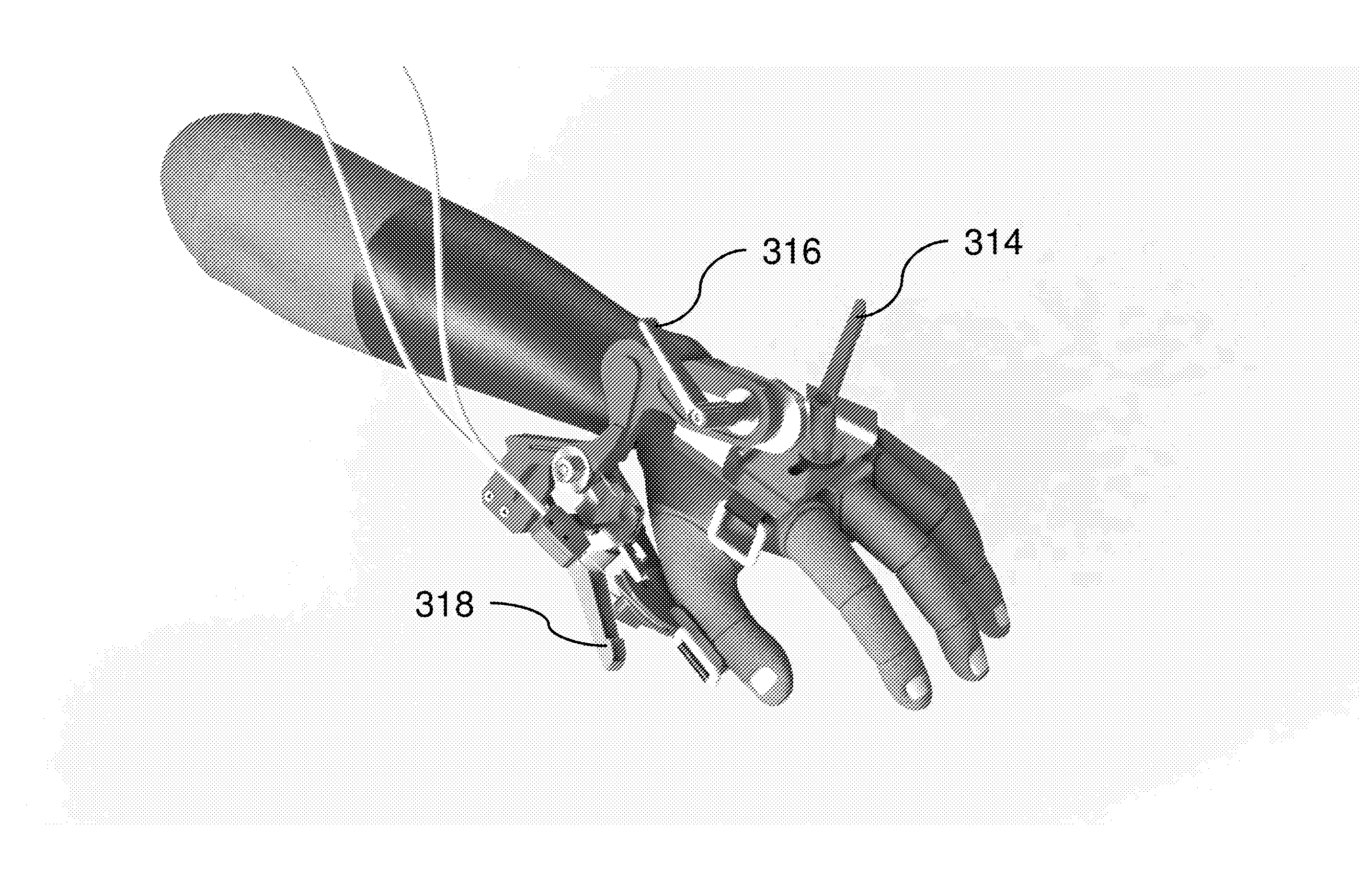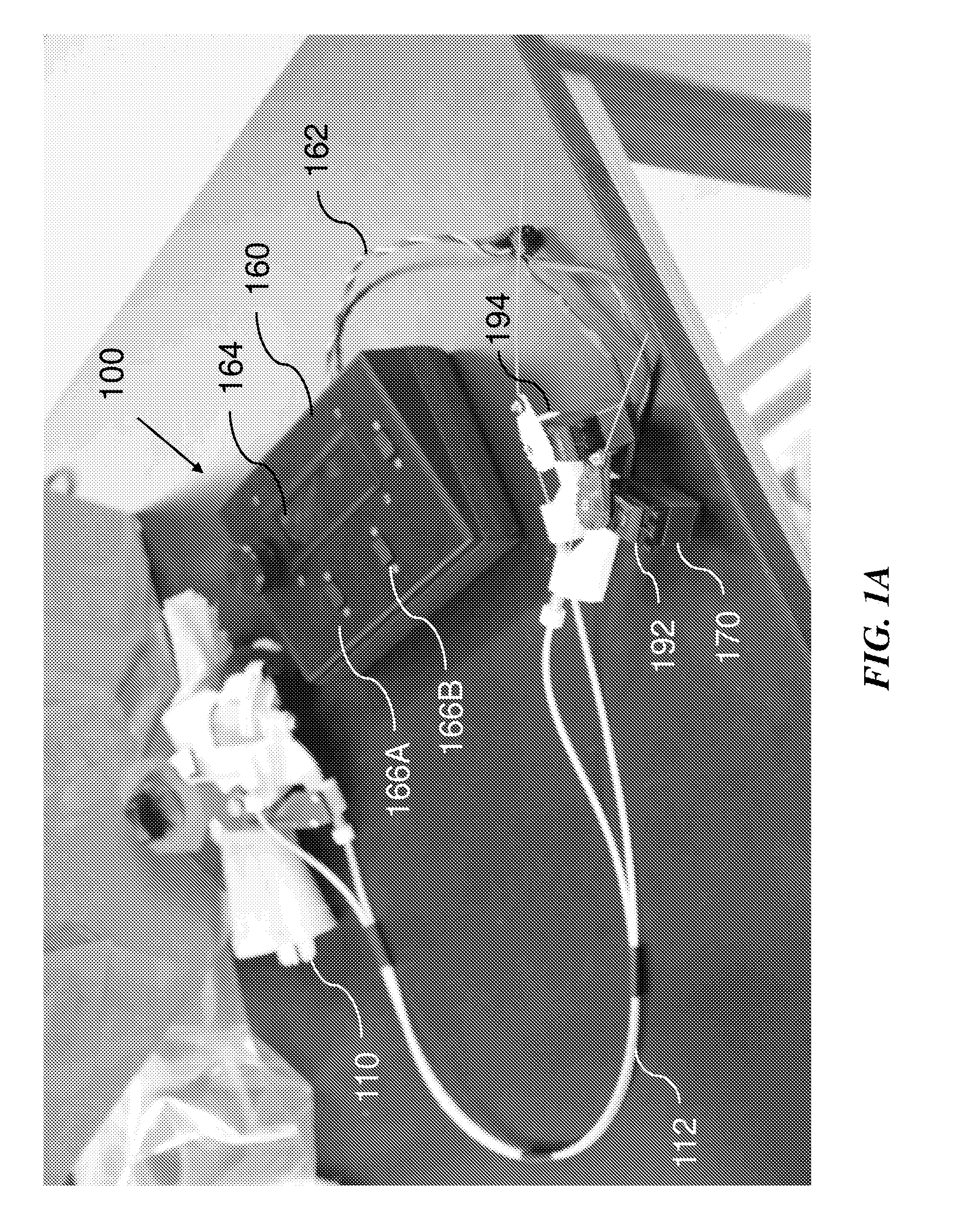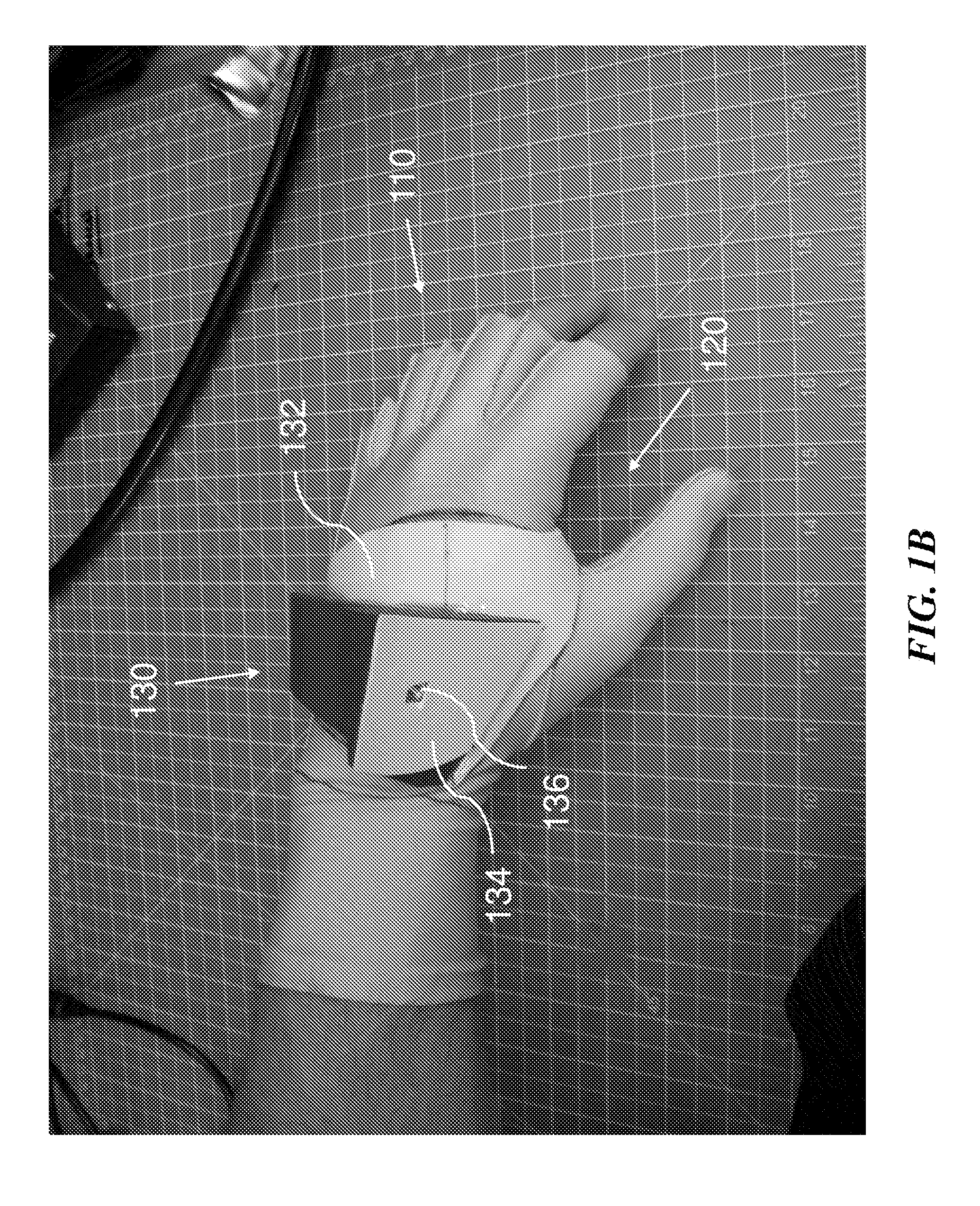Isolated orthosis for thumb actuation
a technology of isolated orthosis and thumb, which is applied in the field of active control of orthotics, can solve the problems of loss of the ability to actively and accurately control the thumb, stroke, or traumatic brain injury, and the loss of the ability and the loss of the ability to grasp more advanced hands and the ability to easily care for themselves. , to achieve the effect of little opportunity for thumb rehabilitation
- Summary
- Abstract
- Description
- Claims
- Application Information
AI Technical Summary
Benefits of technology
Problems solved by technology
Method used
Image
Examples
Embodiment Construction
[0056]The present invention is directed to an isolated orthosis system that can assist in sensorimotor rehabilitation of the digits or fingers of the hand and can be used as an assistive device during every day activities. The orthosis system can generally include an orthotic device designed to be worn on the hand and one or more brace elements, controlled by actuators that are adapted to engage and actuate one or more fingers of the hand. A controller can be provided to control the actuators that manipulate the brace(s) causing one or more digits to move. The controller can include one or more user interface elements, such as a button, a switch, a joystick, a dial or a knob to manually control the motion of the actuator. One or more of the user interface elements can also be embodied in a touch screen based user interface. The orthosis system can also include sensors that can be used to control the motion of one or more actuators in the system (including, but are not limited to, su...
PUM
 Login to View More
Login to View More Abstract
Description
Claims
Application Information
 Login to View More
Login to View More - R&D
- Intellectual Property
- Life Sciences
- Materials
- Tech Scout
- Unparalleled Data Quality
- Higher Quality Content
- 60% Fewer Hallucinations
Browse by: Latest US Patents, China's latest patents, Technical Efficacy Thesaurus, Application Domain, Technology Topic, Popular Technical Reports.
© 2025 PatSnap. All rights reserved.Legal|Privacy policy|Modern Slavery Act Transparency Statement|Sitemap|About US| Contact US: help@patsnap.com



